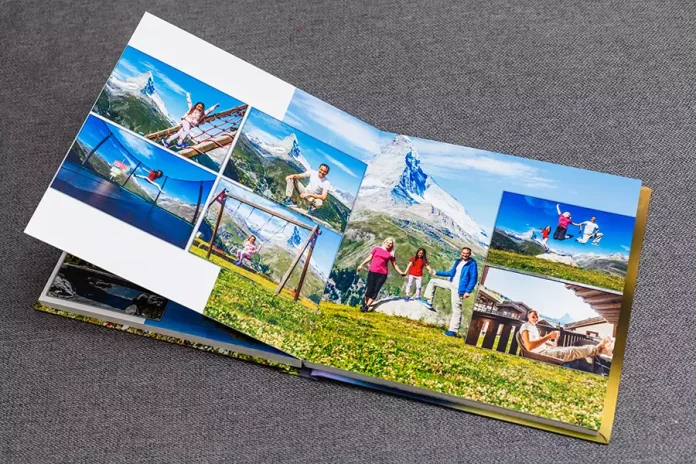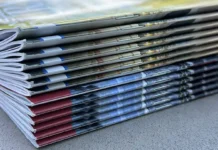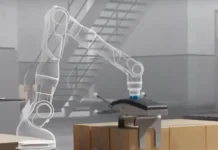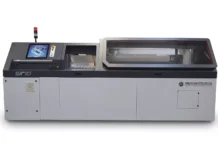By Dianna Brodine, managing editor, PostPress
At the height of the pandemic, a significant increase in durable goods orders kept manufacturers producing at near record levels. Consumers who found themselves at home hit “add to cart” as they made purchase decisions on items to make their living spaces and daily lives more comfortable, including furniture, home appliances and entertainment options. One surprise winner in this shopping spree? Books. Even more surprising, the
spree continues.
According to a report from market research company NPD Bookscan, unit sales of print books increased 8.2% from 2019 to 2020, with 693.7 million print units sold. In 2021, 825.7 million units were sold – an increase of 8.9% in 2021 over 2020. Some of the early sales numbers were driven by panicked parents looking for resources that would replace educational opportunities lost when schools closed. However, with school back in session, young adult fiction books were the biggest driver of the 2021 increase, with unit sales jumping 30.7% according to NPD. Adult fiction sales rose 25.5%.1
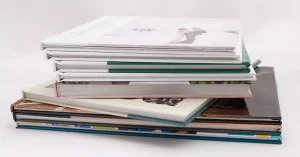 Photobooks are another print industry staple that benefitted from consumers with time on their hands. Many took advantage of the opportunity to scan family photos or finally do something with the images on their cell phone cameras. Digital photobook production sites such as Shutterfly and Snapfish added new book sizes, paper stocks and design options to keep up with demand.
Photobooks are another print industry staple that benefitted from consumers with time on their hands. Many took advantage of the opportunity to scan family photos or finally do something with the images on their cell phone cameras. Digital photobook production sites such as Shutterfly and Snapfish added new book sizes, paper stocks and design options to keep up with demand.
Two industry experts – Rick Salinas, president of Duplo USA, and Al Scolari, president and CEO of APS Imaging Solutions, Inc. – spoke about the trends in bookbinding during Amplify Print in Minneapolis, Minnesota, a first-time event aimed at those involved in print embellishments. During a panel discussion, Salinas and Scolari answered questions about binding processes on the rise, tactile effects, paper challenges and more.
Layflat and perfect binding take off during the pandemic
APS Imaging Solutions is a leading provider of digital lay flat photo book manufacturing systems and accessories to professional photo labs, photographers and studios worldwide. Over the last few years, Scolari has witnessed a surge of interest in lay flat binding, driven by an automated process that makes photo book production more accessible. “We specialize in the panoramic, full-image spread,” he explained. “That type of image is ideal for lay flat binding, and the professional photography market has taken notice. Over this two-year time period when everybody was at home, we’ve seen more photo books being generated – and that came along with a 30% increase in photo books done with perfect binding.”
Duplo USA Corporation also witnessed the growth of perfect binding. The company is the leading provider of print finishing solutions for the graphic arts industry, with highly efficient, modular products that streamline postpress production for digital color and offset applications. “Over the two years of COVID-19, perfect binding was absolutely explosive,” Salinas said. “People were trapped at home and bored, so they started ordering printed books again on sites like Amazon. That created a challenge because these days, when you order a book from a retailer’s website, that book doesn’t exist on a shelf.”
On-demand printing and inexpensive file storage changed the traditional book production and warehousing process. Now, when an order is placed, a file is downloaded and sent to the print facility closest to the consumer’s location. The interior pages are printed, a cover is manufactured and, within a couple of days, the book is on its way for delivery.
“Automation has taken book production to the next level,” Salinas said. “Paperback books are manufactured with this easy, on-demand perfect binding process, and now online booksellers are applying the same automated process to hardcover and lay-flat books to reduce storage costs and avoid low margins when stored books are sold to wholesalers.”
The visual and tactile effects of books
“Embellishments create intrinsic value out of nothing,” said Salinas. “Studies have shown that the more a product can touch the senses – see, touch, smell – the more it entices buyers. So, we see book covers that are foil stamped, embossed, debossed or finished with a soft-touch coating.”
Those print embellishments add visual and tactile elements to the cover of a book, drawing attention on a retail shelf and then enticing the consumer to pick a book up and hold it. This “haptic marketing” focuses on the tactile sensations that create a pleasing experience.
“Through studies, we know that if we can get a consumer to hold onto something, the brain begins to create ownership,” Salinas said. “So, the longer retailers can get purchasers to hold a book in their hands, the more chance there is that consumers will get hooked and take the book home. And, the more unique, the better! People don’t want a traditional book size anymore, so letter landscape formatting has become very popular. Duplo has just released our I Saddle 5.0, and every page in the book be a different size. Those unusual features increase the likelihood of purchase.”
Binding techniques play a critical part in that visual and tactile appeal. Lay flat binding appeals to the high-end coffee table book market. Saddlestitching can be done with an exposed, colored thread that adds a visual ‘pop.’ And raw edge paper adds another point of interest.
Scolari added, “It is all about creating something different. In some of our lay flat binding projects, whether children’s books or other types of printed books, we’ve added multiple inserts to build a thicker page that is extremely stiff. We’ve also had requests for the ability to use different types of substrates in one book, so one page will have a matte finish, but when the page is turned, the next image has a luster or metallic look.”
“Smell is probably the one sense that hasn’t been attacked yet in the printing industry, but I think we are going to start seeing it,” Salinas predicted. “Raised spot UV is something we’ve been doing for a number of years, and I think we’ll eventually see scented polymers come out as another way to attract buyers.”
Paper challenges in book production
Recycled paper stocks are another trend embraced by consumers. But, those stocks can cause problems with equipment throughput or adhesive bonding.
“The problem with recycled paper is that it’s recycled,” Salinas laughed. “To create a good-looking sheet, pulp and clay have to be added. It’s also a cost-cutting measure for paper manufacturers because the actual paper content in paper has gone down significantly. Clay is an inexpensive way to build up a piece of paper, but it can flake off during binding. Then the equipment or adhesive are blamed for failures, but oftentimes the substrate is the issue.”
Synthetic paper, often manufactured from plastic films, has gained in popularity due to its durability. “Synthetic paper looks beautiful when laid perfectly flat, but it doesn’t like to fold,” Salinas explained. “It’s hard to cut, and it’s very hard on the blades. We tell people that Duplo equipment can cut two million books on a single blade, but synthetics often reduce that significantly.”
Scolari said thicker, less flexible substrates also have an impact in the photobook production process. “We score everything with lay flat binding. So yes, we can use many different substrates and prints, but it’s very, very challenging to score a substrate that is stiff. The synthetic papers – and even some of the recycled substrates – can show discoloration after scoring. Sometimes, it’s better to look at a coil binding or perfect binding process.”
Focusing on the elimination of waste
A key component of today’s sustainability conversation is the reduction of waste. Automation is critical in the on-demand world of book production, where a print run may consist of just one book.
“The word ‘makeready’ is a thing of the past,” said Salinas. “When a run length is 13 sheets, you can’t have a 3% or 5% makeready margin. Automation is the only way to achieve zero makeready, and that has to be the ultimate goal for an operation that claims sustainability because every sheet that goes into the trashcan – that isn’t sellable – is created waste. Job flow software that ‘talks’ to the book production equipment as a print job moves through the system facilitates the elimination of waste.”
Scolari knows all about book-of-one production, since most photobooks are one-off orders. “It’s really about automation in regard to the layout, the tiling of the pages. It’s utilizing the material, especially when we’re using leather or other high-end materials. We use an overhead system that projects a tiling layout to eliminate waste and use each material in the most efficient way.”
There’s another often-overlooked source of waste in book production. “In the vast majority of printers in the US, the production staff has no idea of how much time they are wasting between steps,” Salinas explained. “If it takes 20 minutes to print, 20 minutes to bind and 20 minutes to ship, how much time is wasted in between those steps while walking the book block from the printer to the finishing device and then over to the packaging and mailing department?”
Understanding workflow is the first step in eliminating unnecessary steps during the production process. “Before print shops go out and buy a piece of equipment to improve their throughput and speed up production, they have to understand where they are wasting time,” Salinas said. “Then they will understand how to automate their processes to drive out the touch points, increase profits and reduce the chances for error.”
In a world where the printed book has made a comeback, but without the volumes of yesterday, automation is worth the investment.

